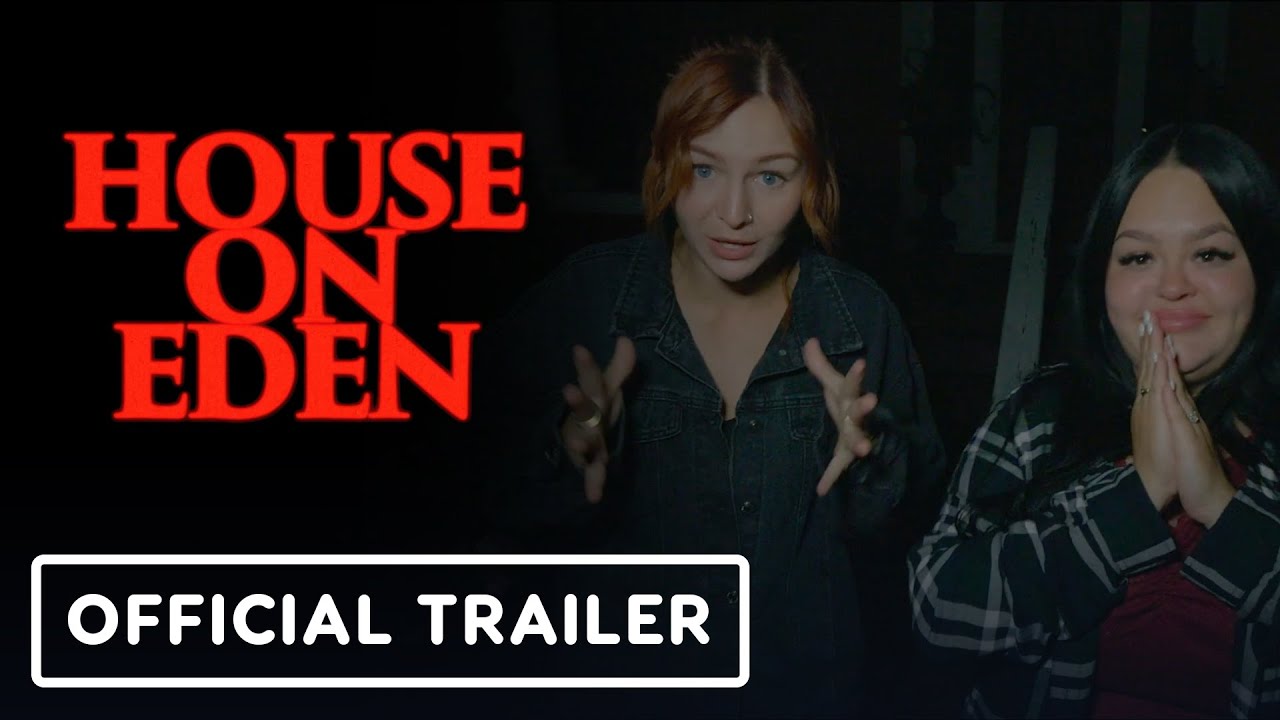
when Horror Yearbook – House on Eden begins with promise for fans of found footage horror, but struggles to maintain tension. The film casts Kris Celina and Jay as content creators investigating a remote house deep in woods, reportedly on Eden Road. The house looks abandoned yet oddly well-kept, creating an uneasy contrast. Initial setup uses multiple cameras to film arguments and exploration, echoing shows like Ghost Hunters and films like Blair Witch Project. Unfortunately, House on Eden often stumbles in its logic and flow. Scenes intended to scare instead feel forced, and many jump scares rely on silliness rather than dread. The reliance on clichés—“did you hear that” whispers, sudden dark chases, shaky cam framing—dilutes its potential. Despite glimpses of creativity and occasional atmosphere, the movie fails to transcend its derivative roots or deliver sustained terror.
With a premise blending investigative horror and supernatural mystery, House on Eden invites comparisons to genre classics. The promotional tagline “Ghost Hunters meets Blair Witch Project” sets a standard many will scrutinize. The film carries echoes of other found footage works but doesn’t fully justify them. House on Eden shows moments of promise: fleeting shadows, strange house quirks, and subtle revelations about Kris’s past. Yet it struggles to commit to its rules. When characters drop cameras while running into dark corridors, the tension undercuts believability. Why switch off primary lighting sources during crucial moments? Why cut away when stationary cameras clearly capture key events? The logic gaps pile up until the format feels like a trap. Found footage succeeds when small decisions feel organic; this film too often forces dramatic structure over narrative sense.
“Read about: They Were Real: 5 True Witch Stories That Are Scarier Than Any Fairy Tale!”
Kris Celina and Jay arrive at the secluded house hoping to capture haunting footage and perhaps resurrect their channel. Jay acts as the cameraman, filming every move while the two hosts push events forward. As they navigate dusty rooms and strange atmospheres, the movie teases revelations about the house’s history and Kris’s personal demons. The dynamic among the trio should build tension, but their actions often contradict prior setup. Arguments staged for dramatic impact feel artificial, and moments that demand emotional weight fall flat because of awkward dialogue. Even when the environment impresses—the creaks, offscreen whispers, and isolated silence—the characters seldom act in ways that feel real. As the story moves toward its climax, the film ramps into more running and screaming than sustained dread. The final act leans heavily on reveal twists, sacrificing logic for spectacle.
“Read more: This Simple Balanced Diet Plan Could Change Your Life in Just 7 Days!”
The biggest weakness of House on Eden lies in its misuse of found footage mechanics. Found footage horror depends on internal consistency: camera placement, framing, who holds what, and editing decisions must make sense to the viewer. This movie abandons consistency too often. In many sequences, the camera is magically steady or frames a room perfectly even though prior scenes show frantic swinging. Cuts morph from shaky handheld to cinematic with no justification. The film also hides key supernatural moments behind jump cuts, even when fixed cameras would have recorded them fully. These choices frustrate the viewer, breaking immersion. When characters act unreasonably—dropping cameras, chasing shadows without thought—the scare potential collapses. As a result, much of the film’s tension leaks away before it can take root.
While House on Eden is not the worst of its kind, it is unlikely to become a genre classic. The film lands squarely in the middle of the found footage pack: competent enough to hold attention but flawed enough to be forgettable. The scares are sporadic, the logic shaky, and the revelations sometimes delightless. Streaming now on AMC+ and Shudder, it may appeal to fans craving fresh ghost stories, though seasoned horror viewers will spot its flaws easily. The movie reminds us that the found footage format still demands careful planning, rule discipline, and character consistency. If you choose to watch, treat it as an experiment in tension rather than a reliable scare ride. For every fleeting breath of atmosphere it offers, it trades off logic and coherence.
This article is sourced from creepycatalog.com and for more details you can read at horroryearbook
Writer: Sarah Azhari
Editor: Anisa